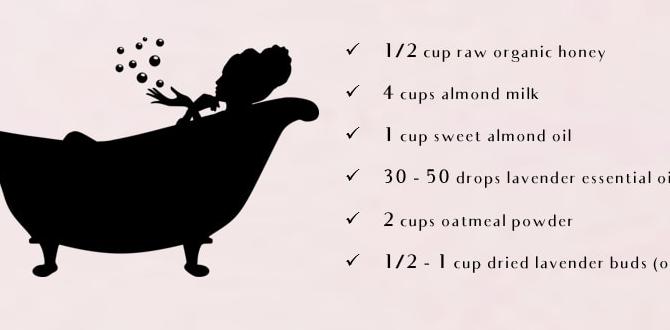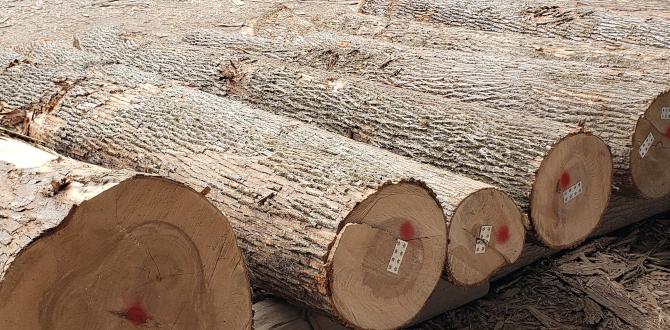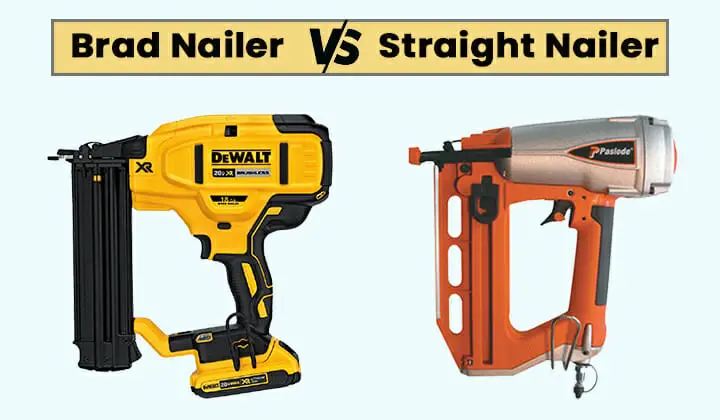Quick Summary:
To use sequential mode safely, always keep your trigger finger off the firing mechanism until ready to shoot. Ensure nails are guided into your material, maintain a firm grip, and never point the nailer at yourself or others. This mode is for controlled, single nail placement.
Table of Contents
How To Use Sequential Mode Safely: An Essential Guide for DIYers
Hey there, fellow DIYers! Jack Shaffer here, your go-to guy for all things nailing and woodworking. If you’ve got a nailer, you’ve probably noticed it has different firing modes. One of the most common is “sequential mode,” and for good reason! It’s fantastic for precise work, but using it safely is super important. Many beginners find themselves a little unsure about how to get the most out of it without any oops moments. That’s totally understandable! Learning to use your tools the right way builds confidence and keeps those projects moving forward smoothly. The good news? It’s actually quite straightforward once you know the basics. We’re going to walk through exactly how to nail it, safely and effectively, with sequential mode. Let’s get your projects looking sharp!
What is Sequential Mode and Why Use It?
So, what exactly is sequential mode on your nailer? Think of it as a “trigger-first, then contact” system. You have to press the trigger and then bump the nose of the nailer against your material for a nail to fire. This is different from “contact actuation” (sometimes called bump mode), where just bumping the nose fires a nail, and holding the trigger fires continuously. Sequential mode is like the careful craftsman’s choice; it demands intentionality with every single nail driven.
Why is this so useful, especially for beginners? For starters, it dramatically reduces the chance of accidentally firing a nail. You press the trigger, giving a clear signal you’re about to fire, and then you make contact. This two-step process is a huge safety feature and allows for much more precise placement. Imagine building intricate trim or assembling a cabinet – you want each nail exactly where you intend it, without it going off by mistake when you’re just repositioning the tool. That’s where sequential mode shines.
It’s also a fantastic mode to learn with. Getting comfortable with the deliberate action of sequential mode builds good habits that carry over to any tool you use. It teaches you to be mindful of where the nailer is pointing and how you’re interacting with the trigger and workpiece. Plus, it’s ideal for jobs where you need to place nails one at a time, like when working with delicate materials or ensuring perfect alignment.
The Core Principles of Safe Sequential Mode Use
Safety is King (or Queen!) when it comes to power tools, and nailers are no exception. Sequential mode adds an extra layer of control, but it’s still essential to understand the fundamental safety rules. Think of these as your nailer’s golden rules:
- Finger Off the Trigger: This is the #1 rule. Your index finger should only be on the trigger when you are deliberately intending to drive a nail. When you’re moving the nailer, adjusting your grip, or repositioning yourself, your finger should be off the trigger and resting alongside the tool.
- Treat Every Nailer Like It’s Loaded: Even if you know there are no nails in it, act as if there are. This mindset prevents complacency and keeps you from pointing a potentially dangerous tool in unsafe directions.
- Never Point the Nailer at Yourself or Others: This might seem obvious, but it bears repeating. Always ensure the nose of the nailer is directed away from any person.
- Maintain a Firm Grip and Stable Stance: A secure grip on the nailer and a solid footing will help prevent accidental discharges and give you better control.
- Keep the Air Hose/Cord Out of the Way: For pneumatic nailers, an air hose can be a tripping hazard or get snagged. For electric models, manage the cord carefully.
- Wear Safety Glasses: Eye protection is non-negotiable. Always wear safety glasses that meet ANSI Z87.1 standards to protect against flying debris.
- Understand Your Specific Nailer: Every tool is a bit different. Consult your nailer’s manual for specific operating instructions and safety features. The Occupational Safety and Health Administration (OSHA) provides guidelines for power tool safety that are excellent to be aware of.
By internalizing these principles, you lay a solid foundation for safe and confident nailer operation. Sequential mode is designed to help you with precision, but it’s your commitment to safety that truly makes the difference.
Switching to Sequential Mode: A Step-by-Step Guide
Most modern framers and finish nailers offer multiple firing modes. Switching to sequential mode is usually a simple process, often involving a selector switch or button. Let’s walk through the typical steps. Keep your user manual handy for your specific model, as there can be slight variations.
Step 1: Power Down and Disconnect
Before you touch any settings, ensure your nailer is safe to handle. For pneumatic nailers, this means disconnecting the air hose. For cordless or corded electric nailers, remove the battery pack or unplug it from the power source. This prevents any accidental firing while you’re making adjustments.
Step 2: Locate the Mode Selector
Examine your nailer. You’ll typically find a switch or button conveniently located near the trigger or on the main body of the tool. It might be labeled with symbols or text like “S” for sequential, “C” for contact, or have icons depicting the different modes. Sometimes, there’s a small lever you simply slide to the desired position.
Step 3: Engage Sequential Mode
Carefully move the selector to the sequential mode position. You should feel a satisfying click or see a clear indicator showing it’s now in the correct setting. If your tool has a mode indicator light, it might change color or display a specific symbol.
Step 4: Reconnect and Test Safely
Once you’ve confirmed the selector is in sequential mode, reconnect your power source (air hose, battery, or plug). Now, for a crucial safety test: find a scrap piece of wood. Hold the nailer firmly against the wood. Ensure your finger is OFF the trigger. Now, pull the trigger. Nothing should happen. Next, with your finger still off the trigger, bump the nose of the nailer against the wood. Again, nothing should happen. Finally, with the nose pressed against the wood, pull the trigger. A single nail should fire. Repeat this test a few times to confirm the tool is operating as expected in sequential mode.
Important Note: Some nailers require you to press down on the contact trip before pulling the trigger. Others allow you to pull the trigger first, and then the nail will fire upon contact. Always refer to your manual for the exact operating sequence of your specific tool.
Mastering the Trigger and Contact Trip
The magic of sequential mode lies in the coordination between your trigger finger and the contact trip (the part of the nailer that you press against the wood). It’s a two-step dance that ensures precision and safety.
The Correct Firing Sequence
Here’s how to execute the perfect sequential fire:
- Placement: Position the nose of the nailer precisely where you want the nail to go.
- Pressure: Press the nailer firmly against the workpiece. This engages the contact trip.
- Trigger Pull: With the nailer firmly pressed, pull the trigger. A single nail will be driven.
It’s vital to remember this order: contact first, then trigger. If you try to pull the trigger first and then bump the nose, some nailers might not fire. More importantly, if you want to avoid accidental firing, your finger must remain off the trigger until the nailer is positioned and pressed against the material.
Common Mistakes to Avoid
- “Riding” the Trigger: Keeping your finger on or near the trigger while repositioning the nailer or adjusting your grip. This is a prime way to accidentally discharge a nail.
- Bumping and Sliding: Instead of a firm press, you might try to slide the nailer while it’s engaged with the surface. This can cause the nail to go in at an angle or miss your intended spot.
- Not Enough Pressure: Not pressing the nailer firmly enough can prevent the contact trip from fully engaging, leading to a misfire.
- Trigger First, Contact Second: As mentioned, this order won’t typically work and can lead to confusion.
Practicing on scrap wood is your best friend here. Get a feel for the pressure needed and the smooth, deliberate motion of pressing and pulling. You’ll be driving nails like a pro in no time!
When to Choose Sequential Mode
Sequential mode isn’t just a “default” setting; it’s your best friend for specific tasks. Knowing when to use it will elevate the quality and safety of your projects.
Ideal Applications for Sequential Mode
- Trim Work: Baseboards, crown molding, window and door trim. Precision is key here to avoid damaging visible surfaces or having nails stick out awkwardly.
- Cabinetry and Furniture Building: When assembling frames, attaching panels, or building drawers, you need to place each nail exactly where it’s needed for structural integrity and a clean finish.
- Detail Work: Any project with intricate cuts or where you need to be extremely deliberate about nail placement.
- Working with Delicate Materials: If you’re nailing into hardwoods that might split or softer woods that can easily dent, controlled single-nail placement is crucial.
- First-Time Users: As we’ve discussed, it’s the safest and most intuitive mode for learning how to use a nailer.
- Proximity to Edges: When nailing close to the edge of a board, sequential mode gives you complete control over that single nail so it doesn’t blow out the material.
Situations Where Other Modes Might Be Better
While sequential mode is wonderful, it’s not always the most efficient choice. If you need to quickly assemble something like a shed frame or a deck, where speed is a priority and nail placement isn’t as critical:
- Contact Actuation (Bump Mode): This mode is much faster. You hold the trigger down, and every time you bump the nose against the material, a nail fires. It’s great for high-speed fastening where you just need to “slam” nails in quickly, like framing walls or running joists. However, it’s less precise and carries a higher risk of unintended firing if not handled with extreme care.
Understanding these distinctions helps you pick the right tool (or mode) for the job, making your work both safer and more efficient.
Essential Safety Gear and Tool Maintenance
Beyond understanding sequential mode, having the right safety gear and keeping your tool in top condition are paramount. They work hand-in-hand to ensure a safe and productive DIY experience.
Your Safety Must-Haves
These are non-negotiable items for anyone operating a nailer:
- Safety Glasses: Again, ANSI Z87.1 rated. Even with sequential mode, wood chips, small debris, or even a glancing blow from a nail can cause serious eye injury.
- Hearing Protection: Nail guns can be loud, especially pneumatic ones. Earplugs or earmuffs will protect your hearing over the long term.
- Gloves: Work gloves can protect your hands from splinters, provide a better grip on the tool, and offer some protection against minor scraps and abrasions.
- Sturdy Footwear: Especially if you’re working on a construction site or in a workshop, you need to protect your feet from falling objects or errant nails.
- Dust Mask: When sanding or cutting wood that produces dust, a mask is essential for respiratory health.
Basic Tool Maintenance for Reliability
A well-maintained tool is a safer tool. Most nailers require minimal upkeep, but a little attention goes a long way.
Pneumatic Nailer Maintenance
- Lubrication: Most air nailers require a few drops of specialized pneumatic tool oil before each use. Check your manual! This keeps internal parts moving smoothly.
- Air Pressure: Always operate your nailer at the pressure recommended in the manual. Too high can damage the tool and blast nails; too low can cause jams or incomplete drives. Visit Tools Today for excellent advice on air pressure regulation.
- Cleanliness: Keep the tool clean, especially the nosepiece. Dust and debris can interfere with the firing mechanism.
- Hose Check: Inspect your air hose regularly for leaks or damage. A damaged hose can be a safety hazard.
Cordless/Electric Nailer Maintenance
- Battery Care: Follow the manufacturer’s instructions for charging and storing your batteries.
- Keep it Clean: Wipe down the tool after use, especially around the magazine and nosepiece.
- Check for Damage: Inspect the power cord (if applicable) and housing for any cracks or damage.
- Magazine Maintenance: Ensure the nail magazine is clear of debris and that nails feed smoothly.
Regularly inspecting your tool and performing these simple maintenance tasks will prevent issues, extend the life of your nailer, and, most importantly, keep you safe.
Troubleshooting Common Sequential Mode Issues
Even with the best practices, you might run into a hiccup now and then. Don’t worry, most common issues are easily fixed. Here’s a look at what you might encounter and how to solve them.
Nail Not Firing
This is a classic sequential mode problem. If you press the nose and pull the trigger, but nothing happens, consider these possibilities:
- Finger Off Trigger: Double-check that your finger is indeed on the trigger when you pull it.
- Not Enough Pressure: Ensure you’re pressing the nailer firmly against the workpiece. You need to fully engage the contact trip.
- Safety Engaged: Some nailers have an internal safety mechanism that can be tripped. Try disengaging and re-engaging the safety (if your model has one) or cycling the trigger/contact trip a few times.
- Low Power (Pneumatic): If using an air nailer, check your air pressure. Is the compressor tank low, or is the pressure regulator set too low?
- Battery/Power Issue (Electric): For cordless, make sure the battery is charged and properly seated. For corded, check the power outlet and cord.
- Jam: While less common on a single misfire, a nail could be slightly jammed.
Nail Firing Without Trigger Pull (Extremely Rare in Sequential)
If your nailer fires only when you bump the nose, even with your finger OFF the trigger, consider this an immediate safety issue. This means the tool has likely defaulted to contact actuation or has a severe internal malfunction. Immediately disconnect the power source (air or battery) and consult your tool’s manual or contact the manufacturer. Do not attempt to use the tool until it has been inspected and repaired by a qualified professional.
Nail Not Driving All the Way
This isn’t strictly a sequential mode issue but rather a power or nail length problem. However, in sequential mode, you’re more likely to notice an improperly driven nail because each one is deliberate.
- Incorrect Air Pressure: Too low pressure for pneumatic nailers.
- Wrong Nail Length: Using nails that are too long for the material thickness or the depth setting on your tool.
- Depth Adjustment: Your nailer might have a depth-of-drive adjustment. Ensure it’s set correctly. Some nailers have an external dial for this.
- Wood Density: Extremely hard wood can sometimes resist full penetration.
Nails Bending or Deflecting
This often happens when nailing too close to the edge of a board, or if the nail is entering at an angle.
- Nailer Angle: Ensure the nailer is held perfectly square to the surface.
- Proximity to Edge: Whenever possible, avoid nailing too close to the end or edge of a board.
- Using the Wrong Nail Size: Ensure you’re using the correct gauge and length for your project.
- Magazine Issues: A slightly misaligned magazine can cause nails to feed at an angle.
For any persistent or concerning issues, especially those related to accidental firing, always refer to your tool’s owner’s manual first. If you can’t resolve it, contact the manufacturer’s customer support. They are there to help!
Frequently Asked Questions (FAQ)
Q1: What’s the main difference between sequential and contact actuation modes?
A: Sequential mode requires you to press the




